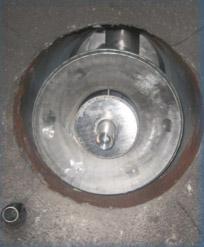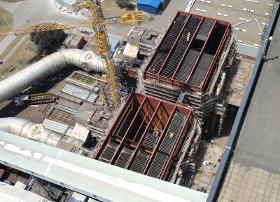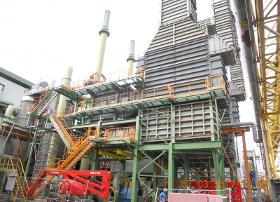- europages
- >
- COMPANIES - SUPPLIERS - SERVICE PROVIDERS
- >
- emissions control
Results for
Emissions control - Import export

EUROPEM
Belgium
Most of the combustion systems currently available in the market attempt to achieve their low NOx emissions combined with low CO emissions and stable combustion by employing relatively long flames, staged combustion air/fuel and with mechanical provisions near the flame to create swirl. The EUROPEM Ultra-low NOx burners use a different philosophy to achieve complete and stable combustion along with ultra-low NOx emissions: The use of thin and short flame profiles: Empirical evidence shows that narrow and short flame profiles achieve the lowest NOx emission values. Controlled flame temperatures: The flame temperature is controlled at a temperature high enough to ensure that no CO is formed whilst the temperature is low enough to avoid any NOx formation. Oxygen concentration near the flame is controlled such that the faster hydrocarbon reaction depletes all the oxygen before NOx can be formed by the slower N2 to NOx reaction. Internal flue gas recirculation: The high velocities at the burner mouth create an internal venture effect which in turn results in internal flue gas recirculation around the flame. A stable and uniform temperature profile without hot spots created in the flame will further minimize NOx formation. EUROPEM Ultra-low NOx burners are equipped with a windbox giving tangential entry of the combustion air to create a natural swirl around the flame. This principle is also employed for the waste gases entering the burner so that additional swirl is created by one or more waste gas streams. Support fuel and rich waste gas are injected through a shell type disc to obtain a narrow and short flame profile. A “tulip flame profile” or “balloon flame profile” are selected, depending on the fuel characteristics.
Request for a quote
HAMON
Belgium
Since Dr. Frederick Cottrell's invention over a century ago, electrostatic precipitators (ESPs) have been a primary technology for controlling particulate emissions. ESPs can be designed to meet stringent particulate emission standards with minimal pressure loss and high equipment reliability for extended plant operation.
Request for a quote
HAMON
Belgium
Besides primary measures, Selective Catalytic Reduction (SCR) is the most effective method for controlling nitrogen oxide emissions (NOx) from combustion sources. It is a commercially proven flue gas treatment technology that has been demonstrated to remove over 98 percent of the NOx contained in combustion system exhaust gas. The catalyst is at the heart of the SCR process. It creates a surface for reacting the NOx and ammonia, and allows for the reaction to occur within typical flue gas temperature ranges.Hamon uses a similar technology to reduce also VOC or CO content.Thorough knowledge in the design of all types of heat recovery systems including heat exchangers made of glass or fluoroplastic tubes to de-saturate the flue gas downstream a wet scrubbing system allows for minimum energy consumption when the flue gas needs to be heated.
Request for a quoteDo you sell or make similar products?
Sign up to europages and have your products listed
Results for
Emissions control - Import exportNumber of results
3 ProductsCompany type